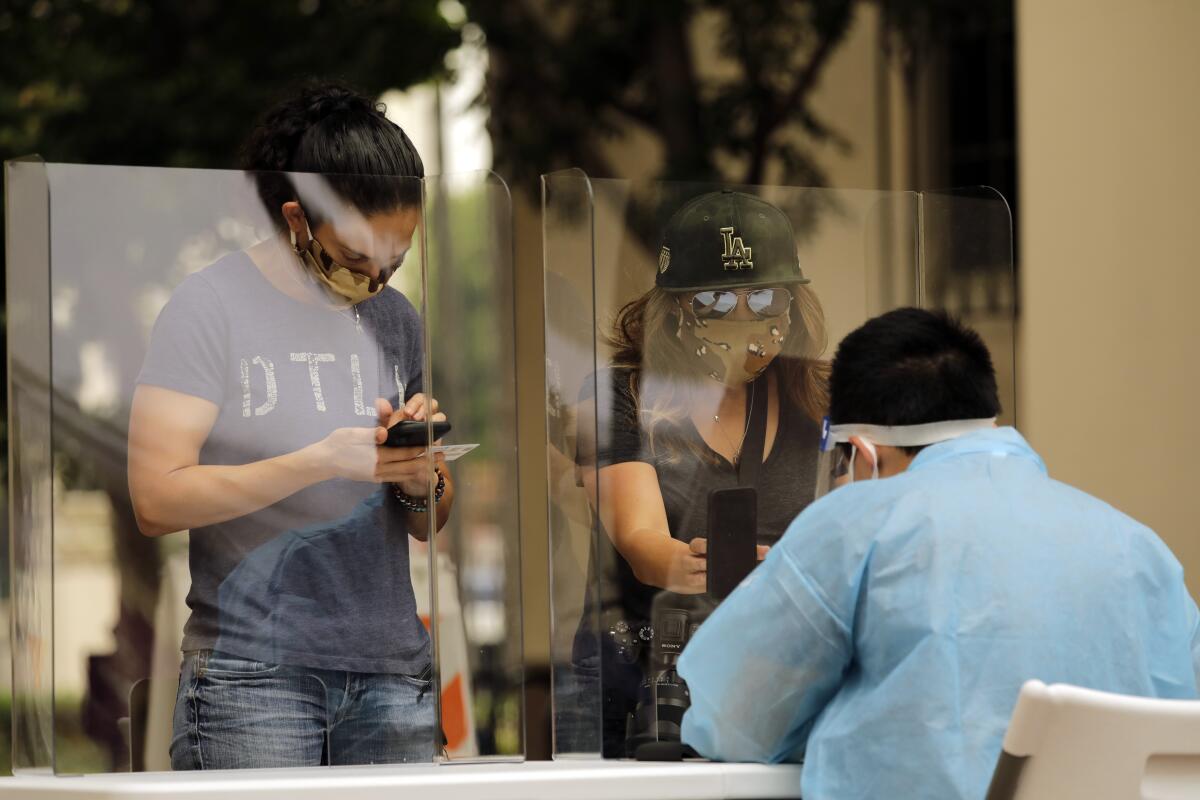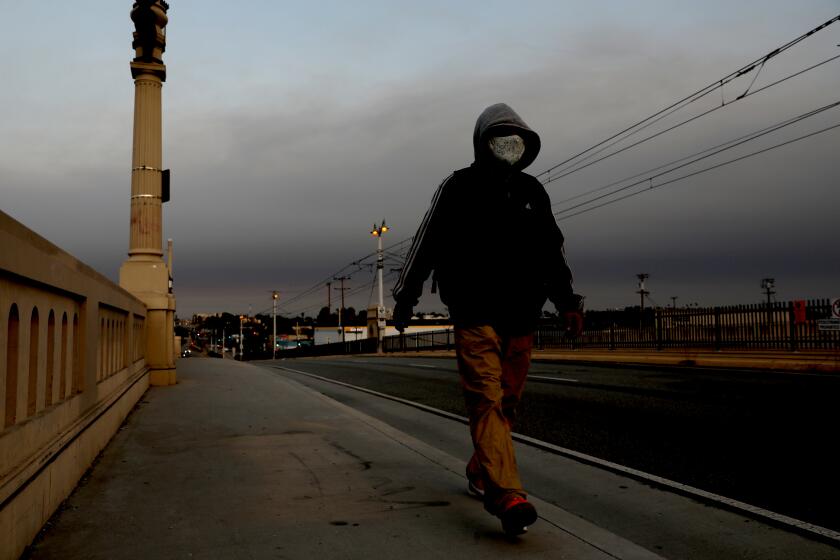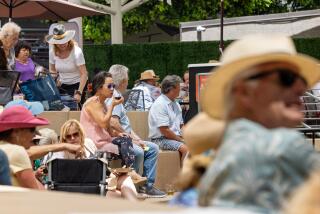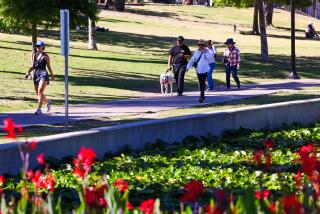Californians are testing positive for COVID-19 at the lowest rate on record

- Share via
As the Golden State faces a triple threat of respiratory risks — destructive wildfires, toxic air quality and a deadly pandemic — there is a faint glimmer of hope.
Over the last seven days, just 3.5% of COVID-19 tests in California came back positive, the lowest rate since the state began reporting the data in late March. A month ago, the positive test rate was nearly twice as high.
The number of new confirmed cases has fallen to the lowest level since mid-June, according to a Times analysis of state data. Hospitalizations for COVID-19 have fallen to the lowest levels since the start of April, with 2,869 patients in hospital beds Saturday.
These positive signs come as California reduces the turnaround time for coronavirus tests. Dr. Erica Pan, the acting state public health officer, said last week that laboratories are now producing test results in an average of 1.3 days.
The data have left officials feeling cautiously optimistic about California’s progress against the pandemic as the state nears the end of the sixth month of stay-at-home orders. They urged residents to stay vigilant and to keep taking the precautions that are working: wearing face coverings in public, observing social distancing with anyone outside the immediate household and staying home whenever possible.
The air around Southern California feels like smoke soup because of wildfires. What does that mean for your health and daily routines?
Officials said there are two factors that could mar the rate of positive tests: a decline in testing during the wildfires and lingering questions about whether Labor Day gatherings caused a surge in transmissions.
It can take up to two weeks for the coronavirus to incubate in the human body. California saw a surge in cases, hospitalizations and deaths after the Memorial Day weekend, which included holiday gatherings, graduation parties, massive protests over police brutality and the reopening of bars, which were later closed again.
Health officials are “very anxious to figure out” whether gatherings, parties and other activities over the latest three-day weekend, which ended a week ago, will lead to another spike in cases, “which then leads to more hospitalizations and even more deaths,” said Barbara Ferrer, director of Los Angeles County’s Department of Public Health.
“We are, in fact, somewhat challenged about getting good data because we’ve had both extreme heat and we’ve had the fires that have created unhealthy air conditions,” Ferrer continued. “What that’s led to, unfortunately, is a lot less testing.”
Ash and smoke from the Bobcat fire were so strong that L.A. County was forced to temporarily close some testing sites in the San Gabriel Valley. But, Ferrer said, the vast majority of testing centers are open. She urged residents to get tested if they have experienced COVID-19 symptoms or have associated with anyone who has, including in a workplace or at home.
Meanwhile, Southern California officials are watching with interest and caution as San Diego and Orange counties have begun to slowly reopen indoor businesses. Both counties have received approval from the state to reopen restaurant dining rooms, museums, movie theaters and places of worship at 25% capacity.
Last week, Los Angeles County reported 9.6 transmissions per 100,000 residents. That rate must fall below seven per 100,000 for two consecutive weeks before Newsom would allow restaurants, theaters and other nonessential businesses to reopen.
For now, no L.A. County school campuses will be allowed to reopen to all K-12 students until at least November. However, schools will be allowed to offer in-person classes for children with special needs, provided occupancy on campus does not exceed 10% of the student body.
Public health officials have received 59 applications from individual schools to reopen for “students who cannot be served virtually,” Ferrer said.
More to Read
Sign up for Essential California
The most important California stories and recommendations in your inbox every morning.
You may occasionally receive promotional content from the Los Angeles Times.












